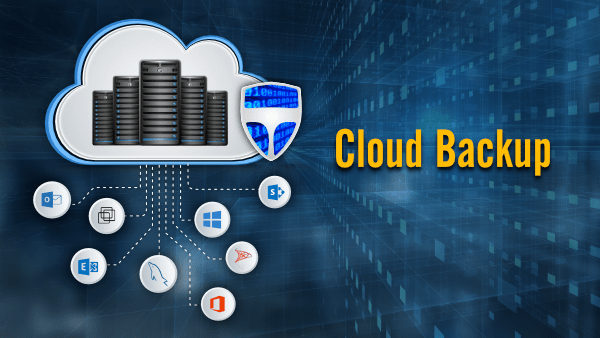JAKARTA, cssmayo.com – In an age where data drives decision-making and fuels innovation, losing critical information can be catastrophic. Cloud Backup offers a resilient solution by storing data off-site in secure, managed environments. This article explores what cloud backup is, its benefits, implementation considerations, best practices, challenges, and real-world use cases to help you safeguard your data effectively.
What Is Cloud Backup?
Definition of Cloud Backup
Cloud Backup is the process of sending a copy of your digital data over the internet to an off-site server. Unlike traditional on-premises backups, cloud backup eliminates manual tape handling, hardware maintenance, and geographic limitations.
Types of Cloud Backup
- Backup as a Service (BaaS): A managed solution where a provider handles backup scheduling, storage, and recovery.
- Self-Managed Cloud Storage: Organizations use cloud object storage (e.g., AWS S3, Azure Blob) and configure their own backup software.
Benefits of Cloud Backup
Scalability
With cloud backup, you can dynamically increase storage capacity as your data grows. This elasticity means you only pay for what you use and avoid costly hardware upgrades.
Cost Efficiency
Upfront investments in backup hardware, tapes, and maintenance staff are replaced by predictable subscription or pay-as-you-go pricing. Cloud Backup reduces capital expenditure and operational overhead.
Accessibility and Speed
Data backed up to the cloud can be restored from anywhere with an internet connection. Rapid retrieval APIs and global data centers help minimize downtime during a disaster.
Security and Compliance
Leading cloud backup providers offer encryption in transit and at rest, multi-factor authentication, and compliance certifications (e.g., ISO 27001, HIPAA, GDPR). These safeguards ensure that your backups meet regulatory requirements.
Key Considerations for Implementing Cloud Backup
Data Classification
Not all data requires the same backup frequency or retention period. Classify your data into tiers (e.g., mission-critical, operational, archival) and apply cloud backup policies accordingly.
Recovery Time Objective (RTO) and Recovery Point Objective (RPO)
Define acceptable downtime (RTO) and data loss window (RPO) for each system. Use these metrics to select backup schedules, replication frequency, and storage tiers in your cloud backup solution.
Encryption and Data Privacy
Ensure end-to-end encryption: data should be encrypted before leaving your network and remain encrypted in the cloud. Manage encryption keys securely—either via a provider’s key management service or your own hardware security module (HSM).
Vendor Selection and SLAs
Evaluate providers based on uptime SLAs, geographic redundancy, data egress costs, and integration with your existing infrastructure. Look for transparent pricing and robust support options.
Best Practices for Effective Cloud Backup
Automate Backup Workflows
Schedule regular, unattended backups to minimize human error. Leverage APIs or built-in scheduling features to ensure your cloud backup runs consistently without manual intervention.
Regular Restore Testing
A backup is only as good as its ability to restore data. Conduct quarterly or semi-annual restores to a test environment to verify data integrity and consistency.
Monitoring and Alerts
Implement monitoring dashboards and alerting for failed backups, nearing storage quotas, or unusual data transfer patterns. Proactive notifications help you address issues before they impact recovery.
Versioning and Retention Policies
Use versioning to maintain historical copies of files, protecting against accidental deletion or ransomware. Define retention periods based on business needs and compliance rules—archive older versions to less expensive cold storage.
Challenges and Mitigation Strategies
Network Bandwidth Constraints
Large data transfers to the cloud can saturate networks. Use incremental or differential backups to send only changed data, and consider WAN acceleration or seeding initial backups via offline data transfer appliances.
Data Privacy and Sovereignty
Different regions have different data residency laws. Choose data center locations that comply with your industry’s regulations, and verify your provider’s data handling policies.
Vendor Lock-In
Switching backup providers can be complex once data is stored in proprietary formats. Mitigate lock-in risk by using open standards (e.g., S3-compatible APIs) and maintaining a small secondary backup with an alternative vendor.
Real-World Use Cases
Small and Medium Businesses (SMBs)
SMBs often lack dedicated IT staff. Cloud Backup services with intuitive dashboards and managed support enable lean teams to protect critical data without deep technical expertise.
Enterprises and Global Organizations
Large enterprises benefit from multi-region replication and advanced compliance features. Integration with enterprise identity providers and SIEM systems streamlines security and audit reporting.
Hybrid and Multi-Cloud Environments
Organizations running workloads across on-premises, private cloud, and public cloud can centralize backups in a unified cloud backup repository—simplifying disaster recovery planning and governance.
Conclusion
Adopting a robust Cloud Backup strategy is fundamental to ensuring business continuity, protecting against data loss, and meeting regulatory mandates. By understanding your data classification, setting clear RTO/RPO goals, automating workflows, and regularly testing restores, you can build a resilient backup environment that scales with your needs. As cloud technologies evolve, staying proactive and informed will keep your data safeguarded in the cloud era.
Elevate Your Competence: Uncover Our Insights on Techno
Read Our Most Recent Article About Agile Methodology!

